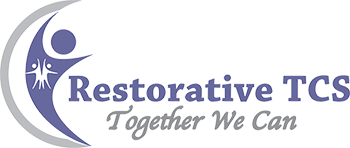As an experienced circle keeper, I have learned a lot from my mistakes. One of my most impactful lessons was learning the value of what I call the “The five key components of restorative circle.” These components help create the physical space needed for safety and support regardless of who is in the circle (e.g. students, parents, staff, administrators etc.) or the type of circle (e.g. curriculum circle, circle of understanding, check-in circle, staff meeting etc.).
The five key components are:
• Sitting in circle – Sitting in circle is a structured way of bringing people together and is one of the most common forms of restorative practices. The circle represents equity and community as everyone can be seen, are the same height, and the circle shape is continuous/unbroken. The act of sitting in circle alone, does not make it restorative. In restorative circles, community members work together to create the safe and supportive space needed for authentic dialogue.
• Circle keeper – Circle keepers are responsible for emphasizing equity, setting a safe and respectful tone, keeping the flow moving, and introducing prompts/instructions. Instead of using punitive approaches, circle keepers address concerns in a supportive and respectful way that holds community members accountable for their actions.
• Talking Piece – The talking piece is an object used to let people know whose turn it is to talk while everyone else listens. Only the person who has the talking piece is talking which increases respectful listening and models the importance of every voice. Restorative practices are not forced on people. Therefore, everyone has the right to pass. A talking piece is even more meaningful when it is something of value to circle participants.
• Centerpiece – The centerpiece represents the center of the community, reminds us of our collective nature, and provides a place for participants to rest their eyes. Like the talking piece, center pieces are even more meaningful when they represent something of value.
• Shared Agreements – Unlike rules which are forced upon individuals/groups, shared agreements represent the things participants are personally willing to do in their time together. Everyone is accountable for upholding the shared agreements. Groups that meet regularly are encouraged to create their own agreement and limit them to 5 or less so participants can remember them. When I hold circle, I start with the following:
o Listen with Respect
o Speak with Respect
o Assume Good Intent
o Confidentiality
Remember restorative circles are structured but, not rigid. For example, the talking piece can be suspended or participants can share as they choose to (popcorn style). If multiple people begin to talk at once, anyone can pick up the talking piece and everyone will know whose turn it is to talk and whose turn it is to listen.
Also, remember the importance of training. Anyone can sit in circle and pass a talking piece. Restorative circles are strength-based, value every person, and include holistic ways of redirecting behavior.





